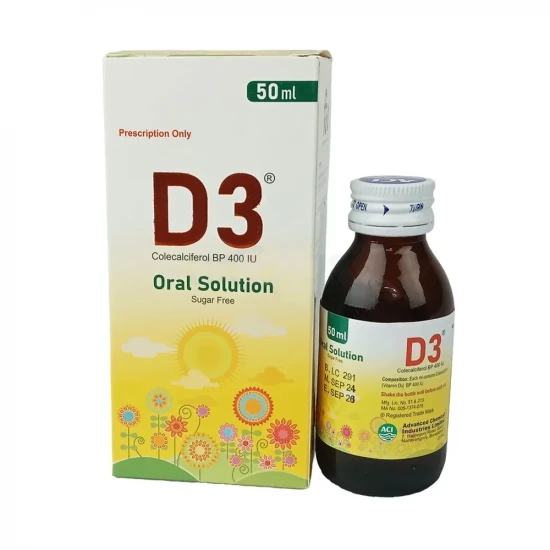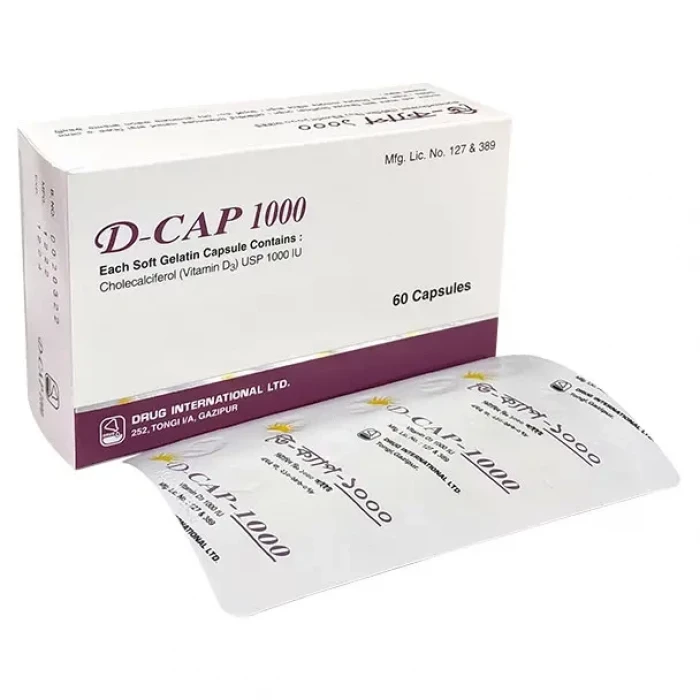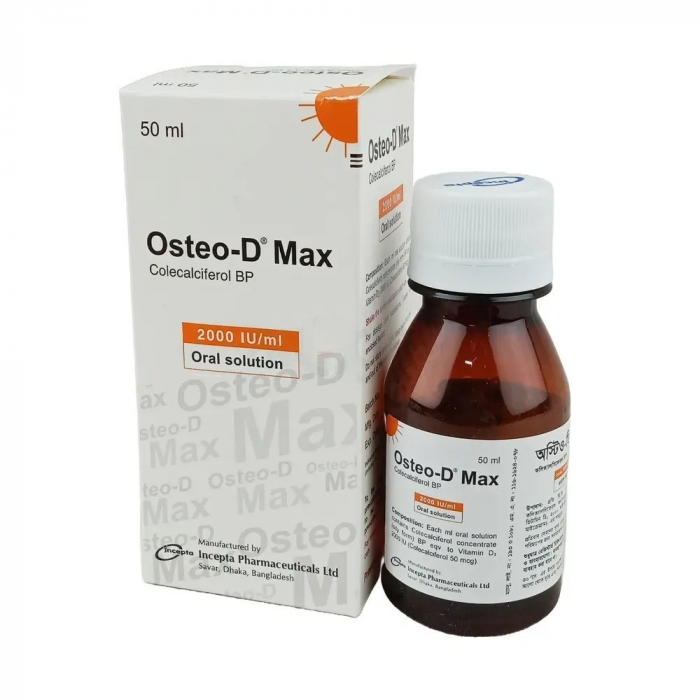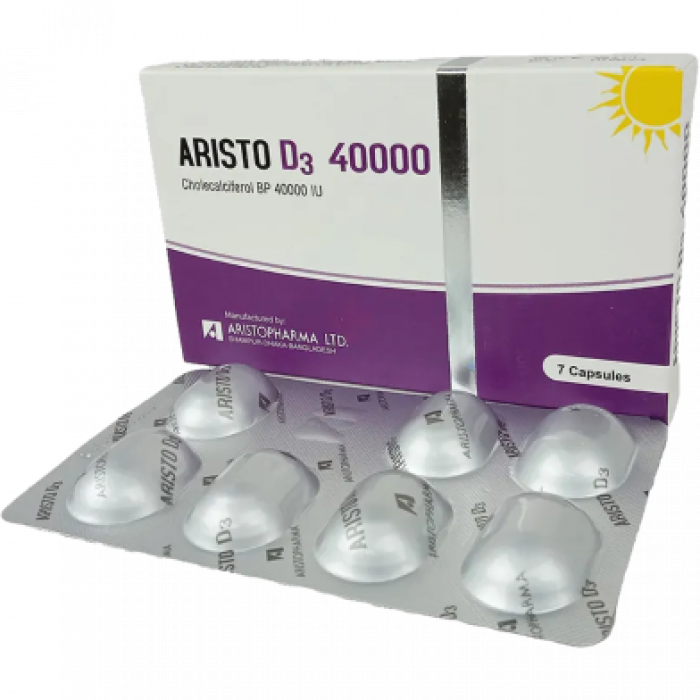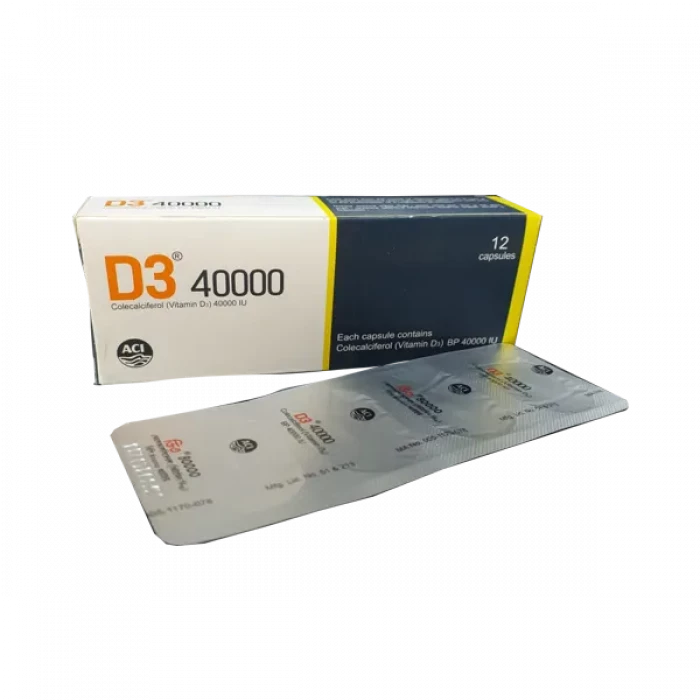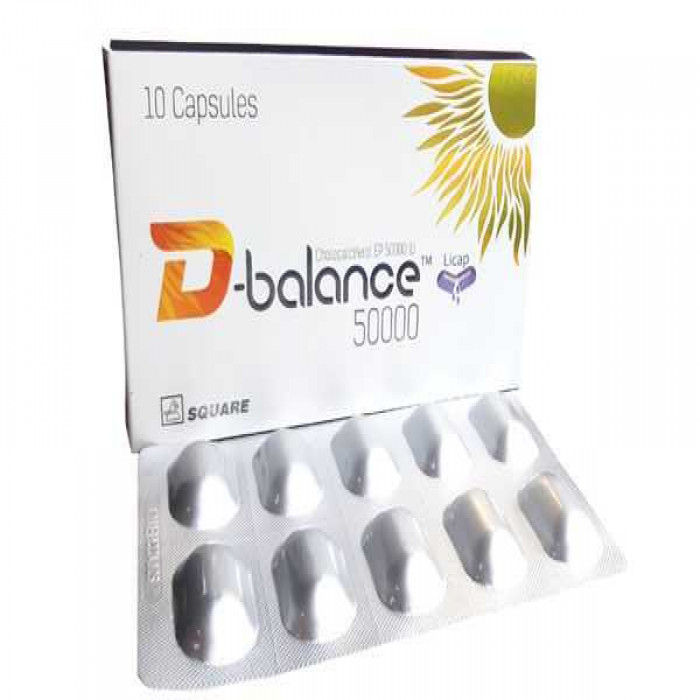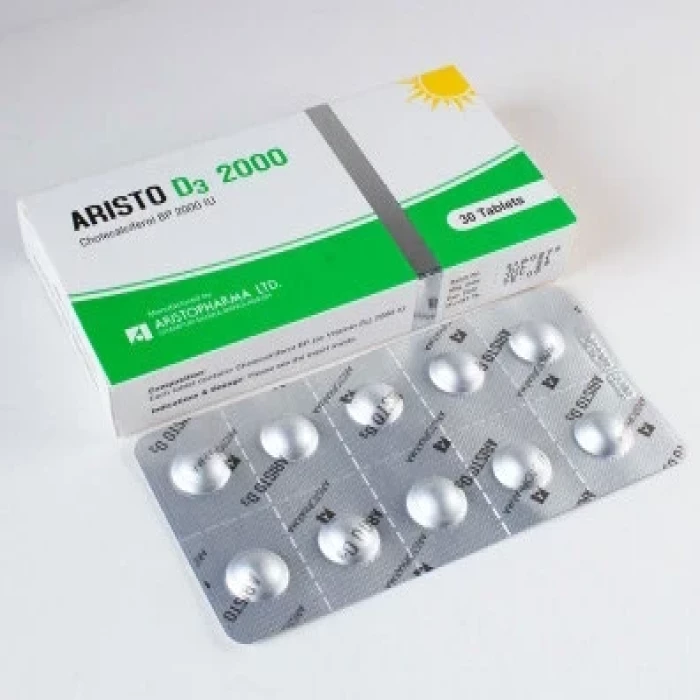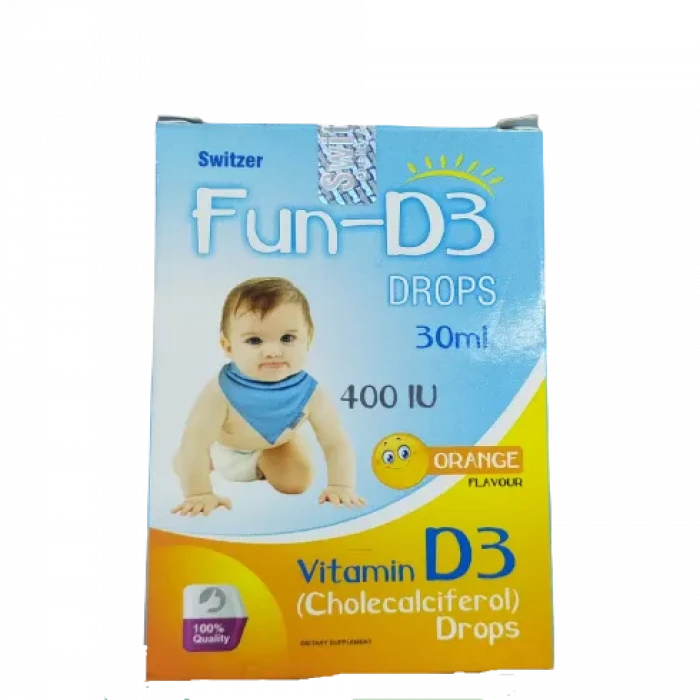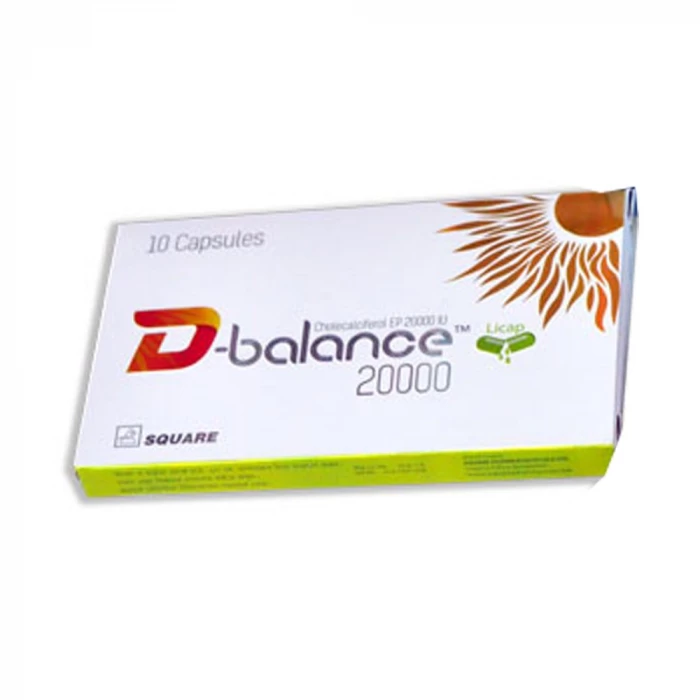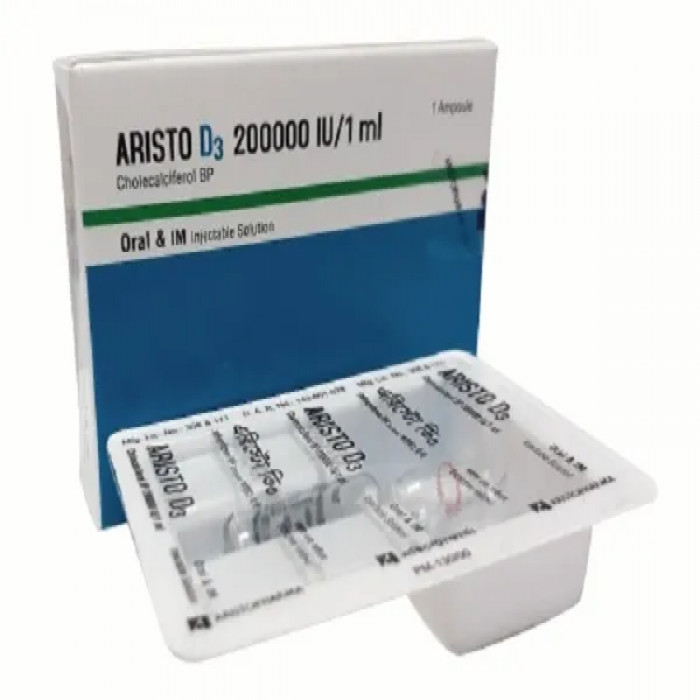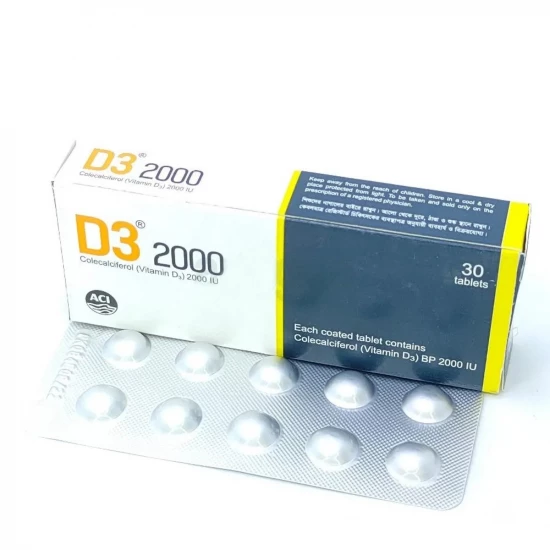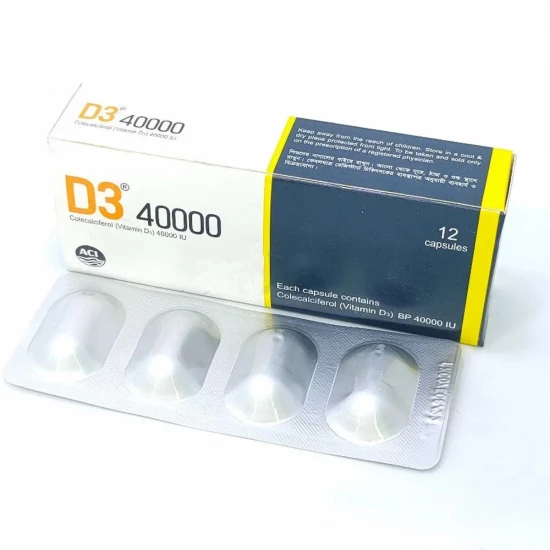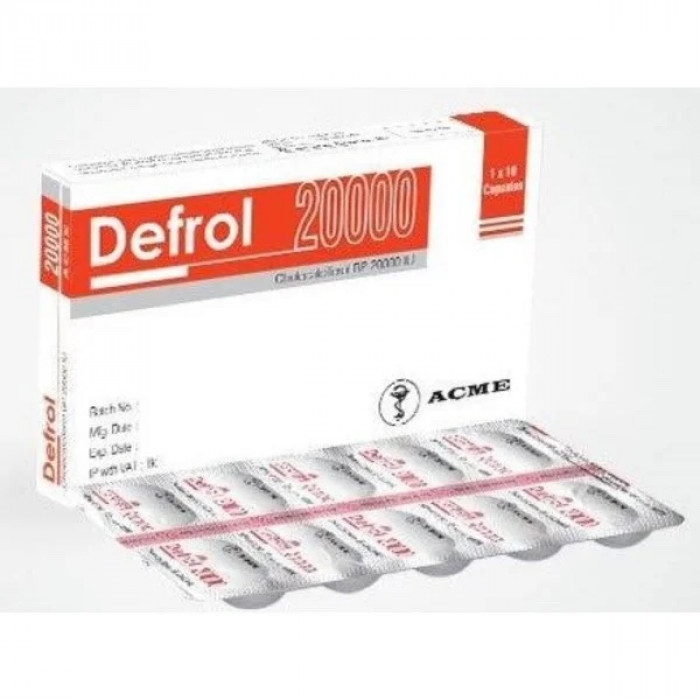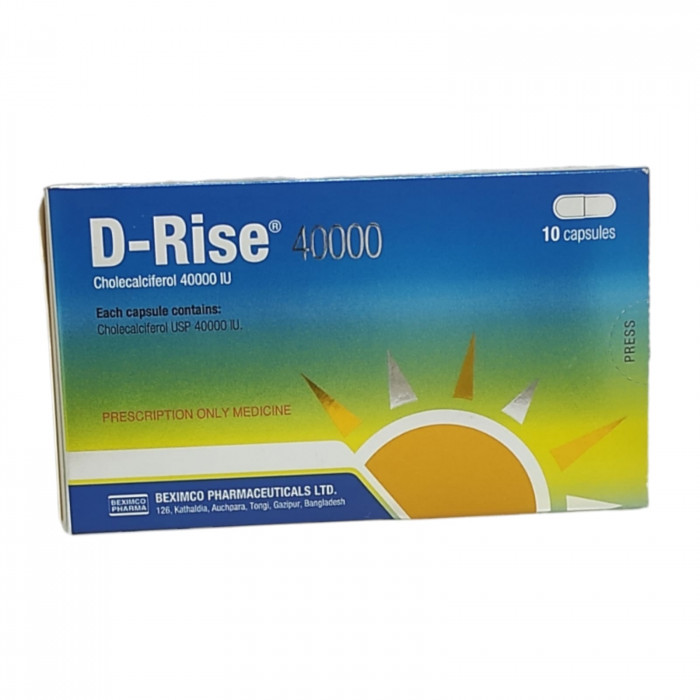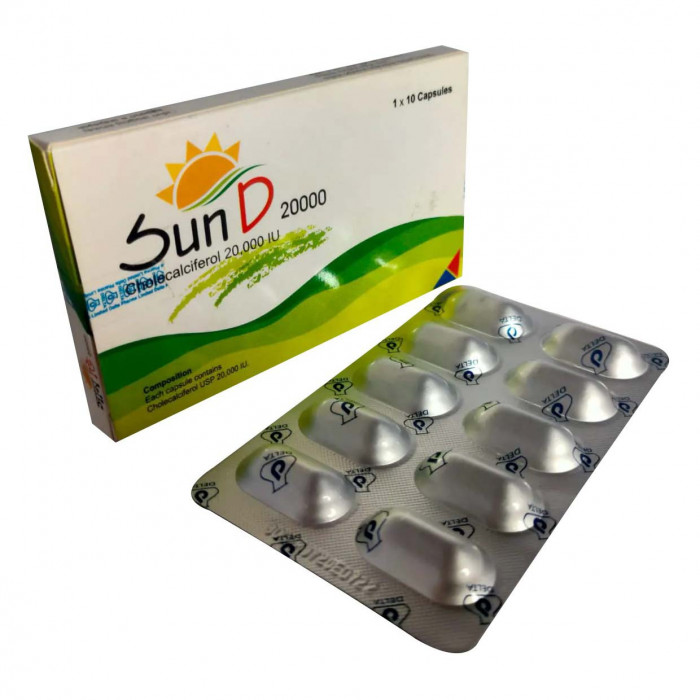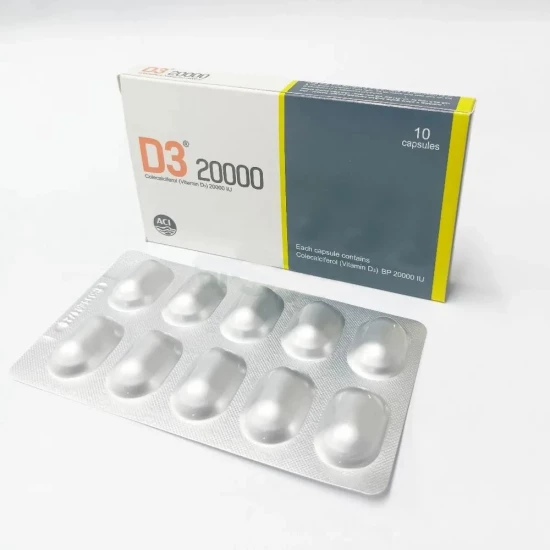
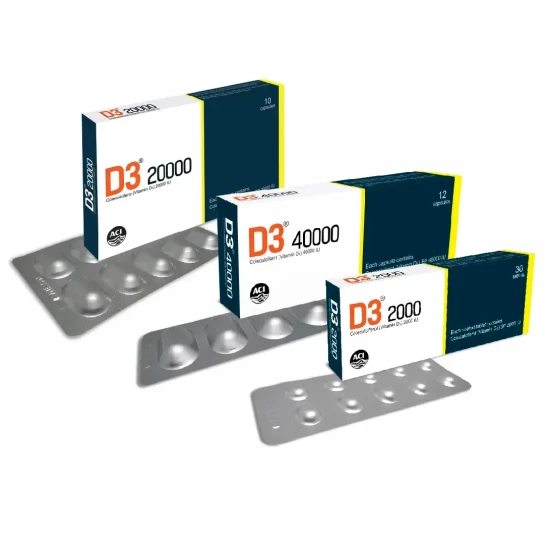
✔ 100% Authentic Product
👁️ Currently Viewing 2711
D3 20000IU Capsule | 1 Strip
Vitamin D3 deficiency can occur in individuals with limited sun exposure or diets low in vitamin D3. Vitamin D3 is crucial for the proper absorption of calcium and phosphate, which are necessary for healthy bones and teeth, and for preventing conditions like rickets, osteomalacia, and osteoporosis. It is also vital during pregnancy and breastfeeding to prevent pre-eclampsia and support the nutritional needs of a growing infant. Additionally, Vitamin D3 plays an essential role in boosting immunity.
Discount
Price: ৳ 190
MRP:
৳
200
5%
Off

100% Genuine Products, Guaranteed

Safe & Secure Payments, Always

Fast, Secure & Efficient Delivery

Proper Packaging
 Cash on Delivery - All over Bangladesh
Cash on Delivery - All over Bangladesh Regular Delivery - 12-24 Hours, Dhaka City* Charge Tk.39-59
Regular Delivery - 12-24 Hours, Dhaka City* Charge Tk.39-59 Regular Delivery - 24-48 Hours, Other Cities* Charge Tk.99-110
Regular Delivery - 24-48 Hours, Other Cities* Charge Tk.99-110
 ফ্রি ডেলিভারিঃ - ৯৯৯ টাকা+ অর্ডারে, ঢাকা
শহরে
ফ্রি ডেলিভারিঃ - ৯৯৯ টাকা+ অর্ডারে, ঢাকা
শহরে ফ্রি ডেলিভারিঃ - ২৯৯৯ টাকা+ অর্ডারে, ঢাকার
বাহিরে
ফ্রি ডেলিভারিঃ - ২৯৯৯ টাকা+ অর্ডারে, ঢাকার
বাহিরে
100% Genuine Products, Guaranteed
Safe & Secure Payments, Always
Fast, Secure & Efficient Delivery
Proper Packaging
 Cash on Delivery - All over Bangladesh
Cash on Delivery - All over Bangladesh Regular Delivery - 12-24 Hours, Dhaka City* Charge Tk.39-59
Regular Delivery - 12-24 Hours, Dhaka City* Charge Tk.39-59 Regular Delivery - 24-48 Hours, Other Cities* Charge Tk.99-110
Regular Delivery - 24-48 Hours, Other Cities* Charge Tk.99-110 ফ্রি ডেলিভারিঃ - ৯৯৯ টাকা+ অর্ডারে, ঢাকা
শহরে
ফ্রি ডেলিভারিঃ - ৯৯৯ টাকা+ অর্ডারে, ঢাকা
শহরে ফ্রি ডেলিভারিঃ - ২৯৯৯ টাকা+ অর্ডারে, ঢাকার
বাহিরে
ফ্রি ডেলিভারিঃ - ২৯৯৯ টাকা+ অর্ডারে, ঢাকার
বাহিরে
✅ Description:
Vitamin D3, in its active form as Calcitriol, works by binding to Vitamin D receptors (VDRs) found throughout various body tissues. As a fat-soluble vitamin, Vitamin D3 has a half-life of approximately 50 days. It is absorbed in the small intestine, then binds to specific alpha-globulins and is transported to the liver, where it is metabolized to 25-hydroxy Vitamin D3 (Calcidiol). A further hydroxylation process in the kidney converts it to 1,25-dihydroxy Vitamin D3 (Calcitriol), which increases calcium absorption. Non-metabolized Vitamin D3 is stored in fat and muscle tissues, and it is excreted through feces and urine.
✔️ Uses
- Osteoporosis
- Hypoparathyroidism
- Rickets
- Osteomalacia
- Vitamin D Deficiency
- Pseudohypoparathyroidism
- Familial hypophosphatemia
✔️ Side Effects of
Rare symptoms include loss of appetite, fatigue, nausea, vomiting, diarrhea, constipation, weight loss, increased urination, sweating, headache, thirst, dizziness, and elevated levels of calcium and phosphate in plasma and urine.
✔️ Dosage & Administration
For Capsules:
Adults:
- Treatment of Vitamin D3 deficiency: 40,000 IU once weekly for 7 weeks. Maintenance therapy requires 1,400-2,000 IU/day, with levels of 25-hydroxyvitamin D checked 3-4 months after starting maintenance therapy.
- Prevention of deficiency: 20,000 IU every 4 weeks, with higher doses needed in certain cases.
- Adjunct to osteoporosis therapy: 20,000 IU once a month.
Children (12-18 years):
- Treatment of deficiency: 20,000 IU every 2 weeks for 6 weeks.
- Prevention: 20,000 IU every 6 weeks.
For Film-Coated Tablets:
- 1,000 IU (1-2 tablets) daily, or as directed by a physician. Take with food or within 1 hour after a meal.
For Oroflash or Chewable Tablets:
- 1,000 to 2,000 IU daily, as directed by a physician. Take with food or within 1 hour after a meal, and swallow after chewing.
For Syrup:
- At Risk of Deficiency:
- 0-1 year: 400 IU/day (2 ml)
1 year: 600 IU/day (3 ml)
- For Deficient Patients:
- 0-1 year: 2,000 IU/day (+50,000 IU/week) for 6 weeks
- 1-18 years: 2,000 IU/day for 6 weeks.
✔️ Use in Special Populations
The safety and effectiveness of Vitamin D3 in children under 12 years have not been established.
✔️ Overdose Effects
Overdose can lead to hypervitaminosis D.
✔️ Interaction
Certain drugs can cause Vitamin D3 deficiency by interfering with its absorption and metabolism, including magnesium-containing antacids, digoxin, thiazide diuretics, cholestyramine, colestipol, phenytoin, phenobarbital, orlistat, and mineral oil. Corticosteroids like prednisolone may increase the need for Vitamin D3.
✔️ Contraindications
Vitamin D3 is contraindicated in all conditions associated with hypercalcemia and in individuals with hypersensitivity to Vitamin D3 or its excipients. It should not be used if there is evidence of Vitamin D3 toxicity.
✔️ Pregnancy & Lactation
Studies suggest that doses up to 4,000 IU are safe during pregnancy. The recommended daily intake for pregnant women is 400 IU, though higher doses may be required for those deficient in Vitamin D3. Pregnant women should follow medical advice tailored to their specific needs.
Vitamin D3 and its metabolites are excreted in breast milk, but overdosing in infants due to breastfeeding has not been observed. When prescribing additional Vitamin D3 to a breastfed child, the dose received by the mother should be considered.
✔️ Precautions & Warnings
Plasma calcium levels should be monitored in patients on high doses of Vitamin D3, especially in those with renal impairment, or during pregnancy and lactation. Individuals taking digoxin, thiazide diuretics, or those with liver or kidney disease, hyperparathyroidism, lymphoma, tuberculosis, or granulomatous disease should consult a healthcare provider before taking Vitamin D3.
✔️ Storage Conditions
Store below 30°C, protected from light and moisture. Keep out of reach of children.
⚠️Disclaimer:
At ePharma, we’re committed to providing accurate and accessible health information. However, all content is intended for informational purposes only and should not replace medical advice from a qualified physician. Please consult your healthcare provider for personalized guidance. We aim to support, not substitute, the doctor-patient relationship.





